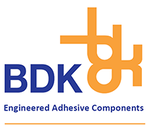Over the years, advanced woundcare has seen a huge number of adhesive technologies being introduced including antimicrobial dressings. This is due to the growing occurrence of chronic skin wounds and increasing risk of infection.
Let’s take a closer look at what antimicrobial dressings are and when to use them.
What Are Antimicrobial Dressings?
Wounds UK definition of antimicrobial dressings is: “contain agents that either inhibit or kill growth or replication of a broad spectrum of microbes.” These antimicrobial agents include silver, iodine, honey or polyhexamethylene biguanide (PHMB). By actively combating microbial colonisation, they reduce the risk of infection, promote an optimal environment for healing and enhance patient comfort.
When to Consider Antimicrobial Dressings
When it comes to when to use antimicrobial dressings, there is a huge variety of wounds that benefit from their properties.
Infected Wounds
The most common case for an antimicrobial dressing to be used is for an infected wound or those that are at high risk of infection. Different antimicrobial agents will be used for different infections, but they will greatly reduce the bacterial load and prevent biofilm formation to resolve the infection and facilitate the healing process.
Chronic Wounds
Pressure ulcers, diabetic foot ulcers, venous leg ulcers and other chronic wounds often present challenges due to prolonged healing times and increased susceptibility to infection. To help manage these wounds, antimicrobial dressings address underlying microbial colonisation and promote wound closure.
Traumatic Wounds
With traumatic wounds, they are much more susceptible to bacterial contamination from external sources and it can be extremely challenging to cleanse them. This is why lacerations, abrasions and puncture wounds benefit from these, to significantly minimise the risk of infection.
Burn Injuries
Antimicrobial dressings can help mitigate the risk of infection in burn wounds; burns create a vulnerable environment conducive to bacterial proliferation and infection. These dressings can aid wound debridement, moisture regulation and pain management to enhance patient comfort and healing.
Surgical Sites
After operations, the integrity of the surgical site must be maintained to prevent postoperative complications, such as surgical site infections (SSIs). This is a great example of when to use antimicrobial dressings as they can protect the surgical incision, reduce microbial contamination and support wound healing during the critical early postoperative period.
BDK & Medicated Dressings
As you can see, these specialised dressings contribute to improved outcomes for patients with a wide range of wounds. It is always vital to consider factors such as wound aetiology, severity and patient characteristics when determining the appropriate use of antimicrobial dressings.
At BDK, we are a specialist medical device manufacturer that has extended our ISO 13485 Medical Device scope to include medicated dressings. We have the capabilities to provide a fast and high quality solution for manufacturing medicated dressings, automating the saturation process with high levels of precision and accuracy.
Contact us for further information on our manufacture of antimicrobial and medicated wound dressings.
BDK will be exhibiting from the 1st May to the 3rd May at the European Woundcare Management Association.
Please visit us on stand F24.

